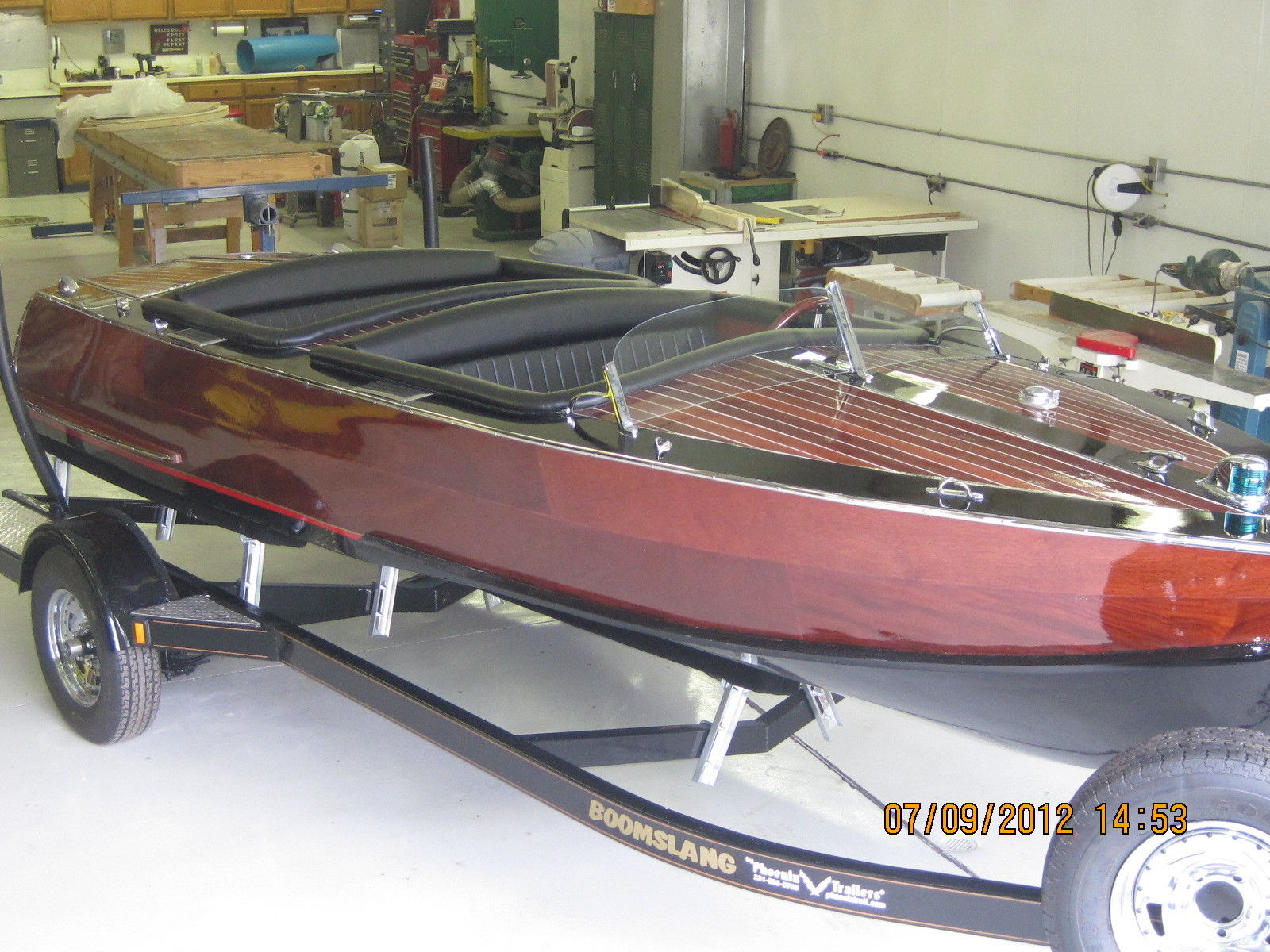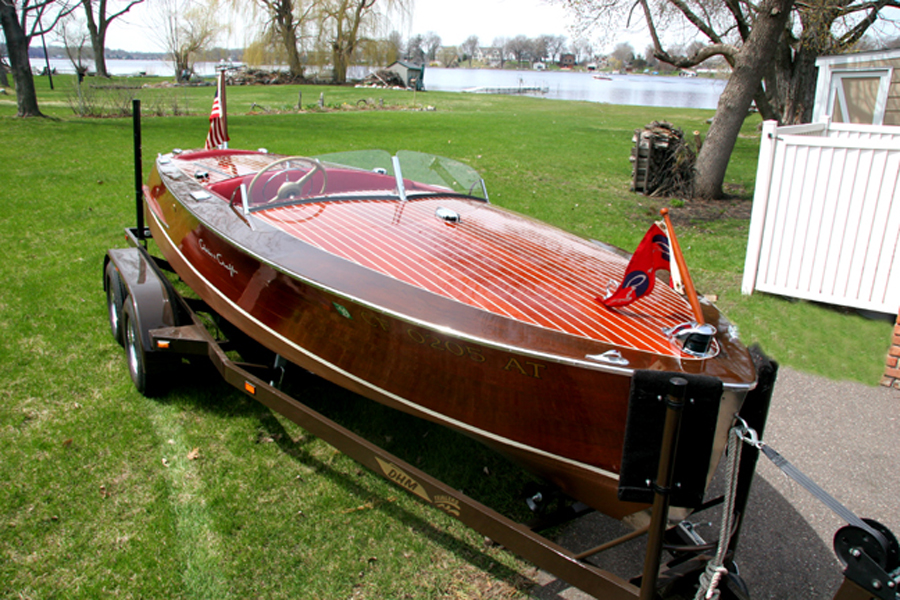

It gave us a great opportunity to talk about different contemporary construction techniques and their advantages and disadvantages. When school started, we presented this project to our second-year students. We ran this idea up Steve’s flag pole and he gave us a BIG thumbs up! At 16 feet, we would have to do lots of scarfing to get planks long enough it wouldn’t cost much in terms of material or time to make it longer.

As we became more familiar with the boat’s lines, we thought it begged to be lengthened to 18 feet. This allowed us to teach two techniques on one hull, but it also makes for a more trailer-friendly bottom. Pat Mahon (Education Director) and I contemplated our options and settled on a strip-planked bottom and blued plywood lapstrake topsides over sawn plywood frames.

As this would b a project for our second-year students, our first task was to change the construction to wood composite. He designed it for traditional construction with lots of steam bent oak frames. lots of freeboard and flair made for a seaworthy platform. Tad’s design was a big boat for its relatively small size. He suggested a Tad Roberts design, called simply enough, 16-foot Lapstrake Speedboat. Steve wanted something similar that would carry a lot for its size and would perform well with a modern 60HP four-stroke outboard. It would replace a tired plywood lapstrake boat that had served in this role for many years. Last fall, the school was approached by local summer resident Steve Upham to build a runabout to ferry people and supplies to his island home.


 0 kommentar(er)
0 kommentar(er)
